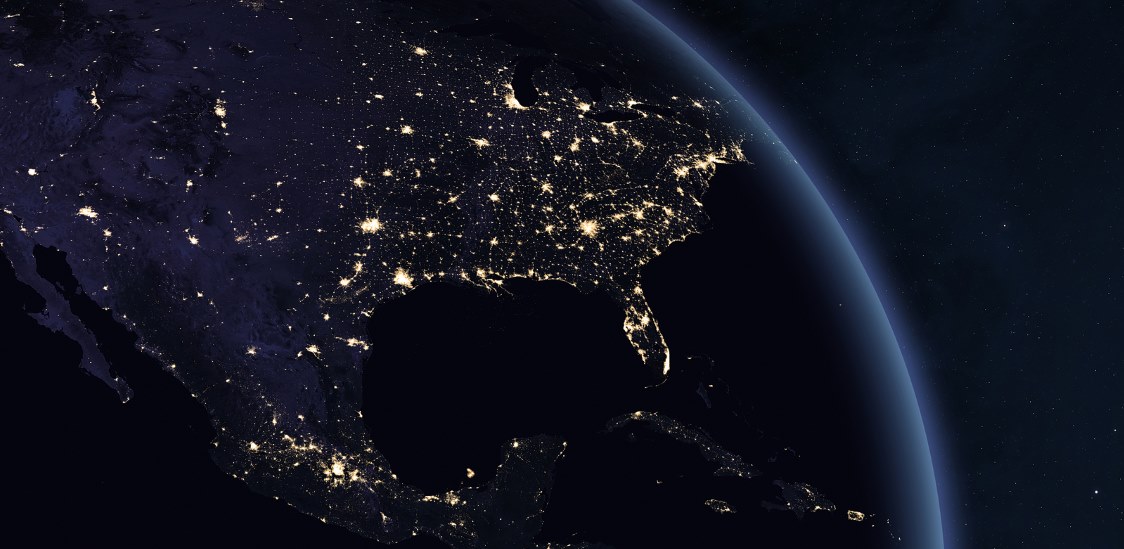Internet technology is crucial to the way individuals, households, and businesses communicate, collaborate, and learn. However, a staggering 24 million Americans are currently unable to access the internet with speeds and bandwidth sufficient to participate fully in the connected world in which we live.
The Broadband Equity, Access, and Deployment (BEAD) Program (established as part of the U.S. Congress’ landmark Bipartisan Infrastructure Bill passed in 2021) has allocated $42.45 billion to bridge this gap and to close the digital divide across America. If used effectively, these funds will provide a vital lifeline to connect millions of unserved and underserved Americans and achieve “Internet for All,” not just internet for some.
A “one size fits all” approach will not close the digital divide
With the United States spanning 3.7 million square miles of varying terrain, deploying wired broadband technologies - such as cable or fiber - presents numerous challenges. For example, given the cost and time to deploy fiber to every unserved home in a given area, it can be simply too expensive and time consuming to focus on fiber alone, given the long distances involved in sparsely-populated “divide country.” The fact is that some connectivity gaps are more challenging to address than others, so no single technology solution can effectively close them all. A better approach is to consider alternative technologies that can complement wired solutions to bridge the digital divide more efficiently and cost-effectively.
Next-generation fixed wireless (ngFWA) is one of those technologies. ngFWA overcomes the limitations of prior fixed wireless access solutions by offering greater range, the ability to essentially “see around” obstructions such as buildings and trees, and strong immunity to interference from other radio signals. With those advantages and the ease of wireless deployment in mind, here are three predictions about ngFWA’s role in expanding broadband access and implementing BEAD funding in 2024:
#1: ngFWA Will Continue to Redefine the Scope of Wireless Broadband
ngFWA is now a proven solution for providing high-speed broadband service in commercial networks. A performance analysis of 50,000 live ngFWA connections shows that the technology delivers up to four times the FCC’s standard for high-speed broadband, as well as impressive non-line-of-sight (NLoS) capabilities and “noise cancellation” of competing radio signals at scale.
 Image Credit: Tarana
Image Credit: Tarana
While legacy fixed wireless solutions lacked the performance and scaling capacity necessary to become a trusted, widely-utilized tool, the breakthroughs behind ngFWA have expanded what’s possible with wireless broadband and will continue to do so.
#2: ngFWA Adoption Will Expand Among Operators
Since its launch in late 2021, more than 200 operators in 21 countries and 45 U.S. states have now adopted ngFWA into their commercial networks.
While many of the operators leveraging ngFWA are WISPs (wireless internet service providers) or ISPs that were already using a hybrid - wired and wireless solutions combined - approach to broadband access, more operator types will begin to leverage ngFWA in 2024. With a handful of cable companies, MNOs, and electrical co-ops already recognizing the significant benefits of ngFWA as a complement to their existing networks, the variety of operators deploying next-gen hybrid networks to best serve their coverage areas will also expand.
#3: Technology-Neutral Solutions for BEAD Will Gain Traction with the U.S. Government
All 50 states and 6 U.S. territories have now submitted their proposed plans for BEAD funding allocation to the National Telecommunications and Information Administration (NTIA). While the most forward-looking of those states acknowledged that there is no “one size fits all” solution to bridging the digital divide, unfortunately a number of states still plan to use a fiber-only strategy. As Rep. Bob Latta (R-Ohio), Chairman of the House Energy and Commerce Technology subcommittee - who oversees the BEAD program’s implementation strategy, noted, this strategy could easily result in both time and money running out long before “Internet for All” is achieved.
However, other states have taken a more pragmatic approach by exploring alternative technologies, such as ngFWA. Pennsylvania, for instance, created a plan that looks to equip all 333,133 currently unserved and underserved locations with whatever technology best suits their needs, while of course still meeting - and in many cases exceeding - the reliable, affordable, high-speed, low-latency standards set by the Bipartisan Infrastructure Law. This strategy will more efficiently and cost-effectively close Pennsylvania’s digital divide.
In 2024, the benefits of a technology neutral approach to closing the digital divide will become ever more apparent, and states will refine their strategies accordingly. This will result in more effective broadband deployments that achieve the BEAD Program’s goal of “Internet for All” on time, and with readily available funds.
Things are looking up
Addressing the digital divide across the U.S. is a major challenge. Fortunately, the BEAD Program and recent technology advancements offer a once-in-a-lifetime opportunity to bring reliable, high-speed internet service to every American family. To do that optimally, all viable broadband solutions must be leveraged. In 2024, ngFWA will play a vital role in reaching all of the unserved and underserved communities in the U.S. efficiently and cost-effectively.






















